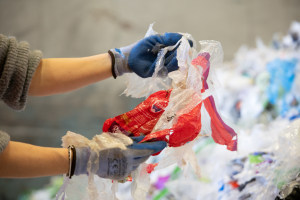Dairy and infant nutrition company A2 Milk has forecast $780-800 million revenue for 1H20, CEO Jayne Hrdlicka said in a speech lodged with the ASX today (19 November).
Hrdlicka said it was expected China label infant nutrition sales to be approximately $135 million, representing a growth rate of around 84 per cent. ANZ English label infant nutrition sales were forecast to grow roughly nine per cent to around $350 million.
Full year earnings before interest, tax, depreciation and amortisation margin (EBITDA) is expected to be in the range of 29-30 per cent of sales, stronger than previously communicated, but lower than 1H20 (31-32 per cent).
Increased marketing and trade activation in China will be weighted more heavily in 2H20, Hrdlicka said. The company’s overall annual marketing spend will be $200 million.
FY19 highlights were:
- $1.3 billion in revenue, an increase of $382 million, up 41 per cent on 2018;
- EBITDA of $413.6 million an increase of $131 million, up 46 per cent;
- NPAT of $287.7 million an increase of $92.0 million, up 47 per cent;
- Gross Margin percentage of 54.7%; and
- Basic Earnings per share of 39.25 cents.
“Our strategy at the highest level gives us three clear priorities. The first is to maximise growth from existing products in core markets; the second is to broaden our product portfolio in core markets with core consumers and the third is to take a careful and considered approach to expanding into other targeted markets and/or different consumer groups.
“For this phase of our business, we consider the most important metrics to measure our success are a series of brand metrics in core markets - awareness, trial and loyalty conversion; share of category consumption; absolute revenue growth; and healthy underlying gross margins, by product categories,” Hrdlicka said.
Other forecast figures outlined were:
- US sales forecast to be approximately $27 million representing a growth rate of approximately 110 per cent;
- CBEC infant nutrition sales forecast to be approximately $155 million representing a growth rate of around 54 per cent; and
- Australia fresh milk sales forecast to be $75 million representing a growth rate of roughly 12 per cent.
Eye on the ball
Hrdlicka said underpinning its financial targets was building capacity In China and ANZ. To accelerate growth in the US and build sustainable brand leadership are also key objectives. Ensuring a2 “has the right people, tools and partners to enable our growth” is the fourth objective.
Brand metrics in core markets – awareness, trial and loyalty conversion; share of category consumption; absolute revenue growth; and healthy underlying gross margins, by product categories are the company’s most important metrics, she said.
Hrdlicka said there has been “good progress” in building its local China team. It also sees “encouraging results” from several in-market tests, which would be scaled up during the second half alongside a new advertising campaign that launches in December in the lead up to Chinese New Year.
“In the US we have launched a new advertising campaign and impactful new packaging which is all contributing to increases in brand awareness and sales velocities in our key accounts.
“We also have a unique opportunity to step-change our information systems, data usage and technology-based tools more broadly. Without the burden of significant legacy systems, we have a great opportunity to put in place state-of-the-art digital data and technology tools to enable our business growth strategy. These projects will be phased over the course of the next three years,” she said.
Hrdlicka said the daigou (Australia-based resellers) network was evolving, using a more sophisticated combination of web-based selling tools, commission-based selling, tapping into social ecommerce networks and other channel pathways into China.
“We believe we also need to continue to improve the way we engage these channels to accurately track and measure a range of Australian reseller activity as the product flows from them to a combination of ‘new generation’ trade customers and consumers. We have a long history of working well in these channels and we will not take our eye off that ball.”
Measuring growth
Hrdlicka said channels outside of Australia account for around 90 per cent of the infant nutrition market’s value. “We are significantly under-developed in the majority of these strategically important channels to consumers,” she said.
Reseller channels will continue to be strategically important, but they represent a small part of the market and are unlikely to grow at the levels it has in the past. Serving major established and emerging channels – mother and baby stores (MBS) and cross border e-commerce (CBEC) channels needs to be “significantly increased” to realise a2’s “very significant potential”.
It requires “continued investment in capability and tools to understand each unique channel in a constantly evolving market,” she said.
Hrdlicka said reliable market share data in a complex and fast-moving market like China is “impossible”. Its latest Kantar MAT share was 6.4 per cent.
“Kantar remains the best single metric for consumption but under-represents our share of stages three and four. This is for a variety of reasons, but principally due to Kantar only tracking children’s consumption from 0-3 years of age across select Key & A, and B, C, D cities.
“Internally we use a methodology to triangulate several sources of data, including Kantar, Nielsen MBS data and Smartpath e-commerce data plus internal product movement data to formulate our view of category size, channel growth and our relative share position. We are pleased with our progress.”










